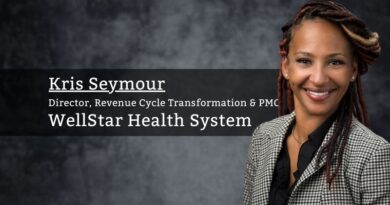Advanced Beneficiary Notifications – the Final Frontier
By Dr. Sarah Kramer, MD, CMIO, Yuma Regional Medical Center
We live in an era of incredibly mature electronic health systems and decision support. While some technologies, such as block-chain and artificial intelligence have yet to show their full potential, the rest of real-time clinical decision support is a very mature field. In this context, why is it still so to present real-time cost and coverage information at the time of diagnostic test selection? Instead, it seems that we are locked into the clunky, archaic Advanced Beneficiary Notice of NonCoverage, otherwise known as the “ABN”.
Maybe other organizations have come up with an elegant solution that works for physicians and their patients. In most traditional health systems (those who do not have a health insurance arm), the workflows involved seem oriented to meet regulatory requirements of CMS and the Registration and Scheduling staff. More recently, CMS have pushed health systems to publish their standard prices on line. Both tools are important, and yet do not meet the needs of physicians and patients at the point of care.
Why can’t a physician and a patient know, at the time of consultation, if a test is covered, and what the patient will have to pay?
The current limitations I have observed in the current state ABN workflow is that the alert pops up with a form only at the time of signing the order. It typically contains minimal pricing information and no recommendations about alternative studies or diagnoses.
In an ideal world, in-line decision support for physicians regarding non-covered services would contain the following:
- The ability to match against the patient’s problem list to look for proper diagnoses already charted on the patient.
- A list of “common indications” that are typically covered, as well as the ability to add in free text.
- Where appropriate, alternative procedures that would be covered, given the patient’s diagnoses.
- The ability to do minimum frequency checks against a future, planned date, rather than the date the study is being ordered.
- The ability to do minimum frequency checks against related studies that exist in records that are available through the Health Information Exchange (a tall order, I’ll admit!).
- In-line display of estimated cash pricing.
- The ability to customize to include additional alternatives, such as clinical trials.
- Two-step decision making and processing such that the finalized decision is passed to other members of the care team to complete the process, including financial counseling, if appropriate.
Appropriate Use Criteria and Pharmacy Benefit engines are probably getting to be the closest in terms of a usable reference to assist physicians and patients steward their healthcare resources, although not incorporating my entire wish list. An ideal solution would allow incorporation of the Choosing Wisely campaign as well. Although Choosing Wisely specifically steps clear of coverage determinations, it overlaps considerably with how physicians recommend for and against diagnostic tests.
Certainly, the infrastructure for real-time eligibility and preauthorization exists. Standardized vocabularies such as SNOMED and LOINC should make interoperability a breeze. The use of FHIR APIs are in place in most large health systems, to facilitate secure data flow.
We often look for big, innovative disruptions to save us from ourselves in healthcare. Here is a classic “last mile” problem waiting to be solved. Why can’t a physician and a patient know, at the time of consultation, if a test is covered, and what the patient will have to pay? Let’s hope there are a few innovators out there considering how to build that mousetrap. I’d sign up!



